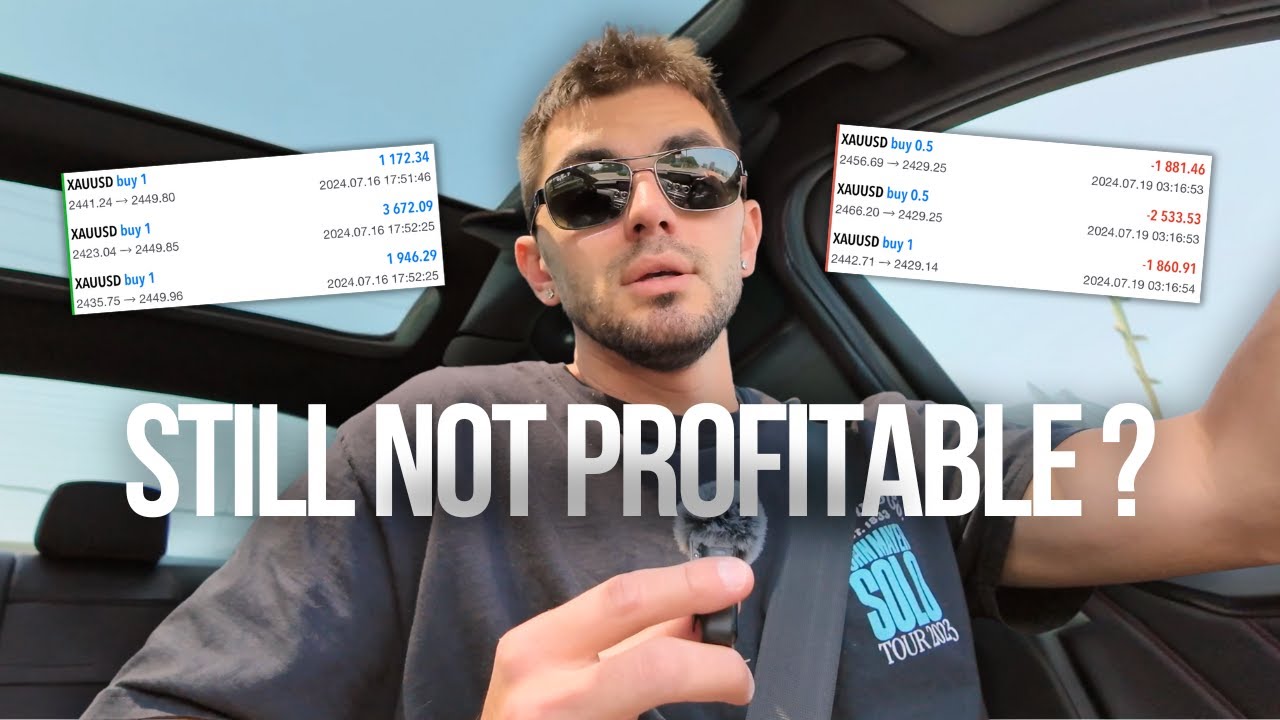Modulul I - Lecția 10 - Cum Obțin Capital De Tranzacționare?
Summary
TLDRThis video script addresses the challenges faced by aspiring traders, particularly regarding the availability of trading capital. It explores two primary types of capital: personal and funded. The script emphasizes the importance of prioritizing time and investing in one’s education before applying for funded trading accounts. The narrator shares their personal experience and method for success, advocating for a well-planned approach that includes a mix of studying, practice, and strategic investments. The video highlights the benefits of working with financing companies and concludes with an invitation to join a community focused on long-term trading success.
Takeaways
- 😀 Many people make excuses about not having time to trade, but they prioritize other activities like Netflix or walks in the park over their goals.
- 😀 Time management is crucial for success in trading; we all have 24 hours a day, and it’s about how we prioritize our time.
- 😀 A major challenge for beginners in trading is the lack of capital, but in reality, obtaining trading capital has never been easier.
- 😀 Trading with personal capital is safer but carries emotional risks, as you’re directly handling your own money.
- 😀 Funded accounts (capital from trading companies) reduce emotional stress, as the company absorbs the losses, but you share profits with them (typically 80/20 split).
- 😀 Funded accounts are a win-win situation: traders get the capital to trade, and companies benefit from the trader’s profits (they keep 20%).
- 😀 There are different funded account sizes available, ranging from €5,000 to €400,000, providing opportunities that didn’t exist in the past.
- 😀 If you are skilled at trading, securing a funded account can quickly solve the issue of having enough capital to trade.
- 😀 The process to obtain funding typically involves a test (with phases) where traders demonstrate their abilities before receiving capital.
- 😀 The speaker shares their own experience of how they would approach trading if they were starting from scratch, emphasizing the importance of study, skill development, and gradual capital growth.
Q & A
What are the common excuses people make for not starting trading?
-Many people claim they don't have enough time or capital to start trading. In reality, time is often not the issue, as they spend time on activities like watching Netflix or going for walks. The real challenge is prioritizing their time and putting in the necessary effort.
How can someone overcome the issue of lack of capital for trading?
-While lack of capital can be a concern for some, it's easier than ever to obtain trading capital today. The biggest challenges in trading are emotional management, strategy, and risk management, not the capital itself. Additionally, one can trade with funded capital from trading firms.
What are the two types of trading capital mentioned?
-The two types of trading capital are personal capital and funded capital. Personal capital is more secure because it's your own money, but it comes with emotional risks. Funded capital, on the other hand, reduces emotional stress since the company assumes the risk, but you have to share a percentage of your profits with them.
What are the advantages and disadvantages of trading with personal capital versus funded capital?
-Trading with personal capital gives you full control over your funds and all profits. However, it carries emotional risks, as losing your own money can be stressful. Funded capital offers lower emotional stress, as the company absorbs the losses, but you need to share a percentage of your profits with the funding company.
How do funding companies (Prop Firms) assist traders?
-Funding companies help traders by providing them with capital to trade. They usually require traders to pass a test, after which they provide funding. Traders then keep a percentage of the profits while the company takes a share. These companies are a win-win situation, offering traders the chance to trade without their own capital.
What is the process for obtaining capital from a funding company?
-To obtain capital from a funding company, you need to pass a two-phase test demonstrating your trading skills. If you pass, you receive funding, and you can begin trading with the company's capital, keeping a percentage of the profits you generate.
What is the typical profit-sharing arrangement with funding companies?
-Typically, you keep 80% of the profits, while the funding company takes 20%. Some companies may offer more favorable profit-sharing ratios depending on the terms and your performance.
What would the speaker do if they were starting from scratch in trading?
-If starting from scratch, the speaker would begin by studying trading for free, finding a job to earn money, and gradually building capital. They would then test their strategy on a demo account before applying for funded capital. The goal would be to scale and diversify their investments over time.
How long does it typically take to get funded for trading?
-It typically takes about three months from the time of application to secure funding. This time frame does not include the period of learning and preparing beforehand.
What should a person do before investing in trading or a funding program?
-Before investing in trading or a funding program, it's essential to study thoroughly and ensure you're making well-informed decisions. It's important to understand the risks, be responsible with your investments, and not seek quick profits. Trading is about long-term, calculated success.
Outlines

此内容仅限付费用户访问。 请升级后访问。
立即升级Mindmap

此内容仅限付费用户访问。 请升级后访问。
立即升级Keywords

此内容仅限付费用户访问。 请升级后访问。
立即升级Highlights

此内容仅限付费用户访问。 请升级后访问。
立即升级Transcripts

此内容仅限付费用户访问。 请升级后访问。
立即升级浏览更多相关视频
5.0 / 5 (0 votes)






